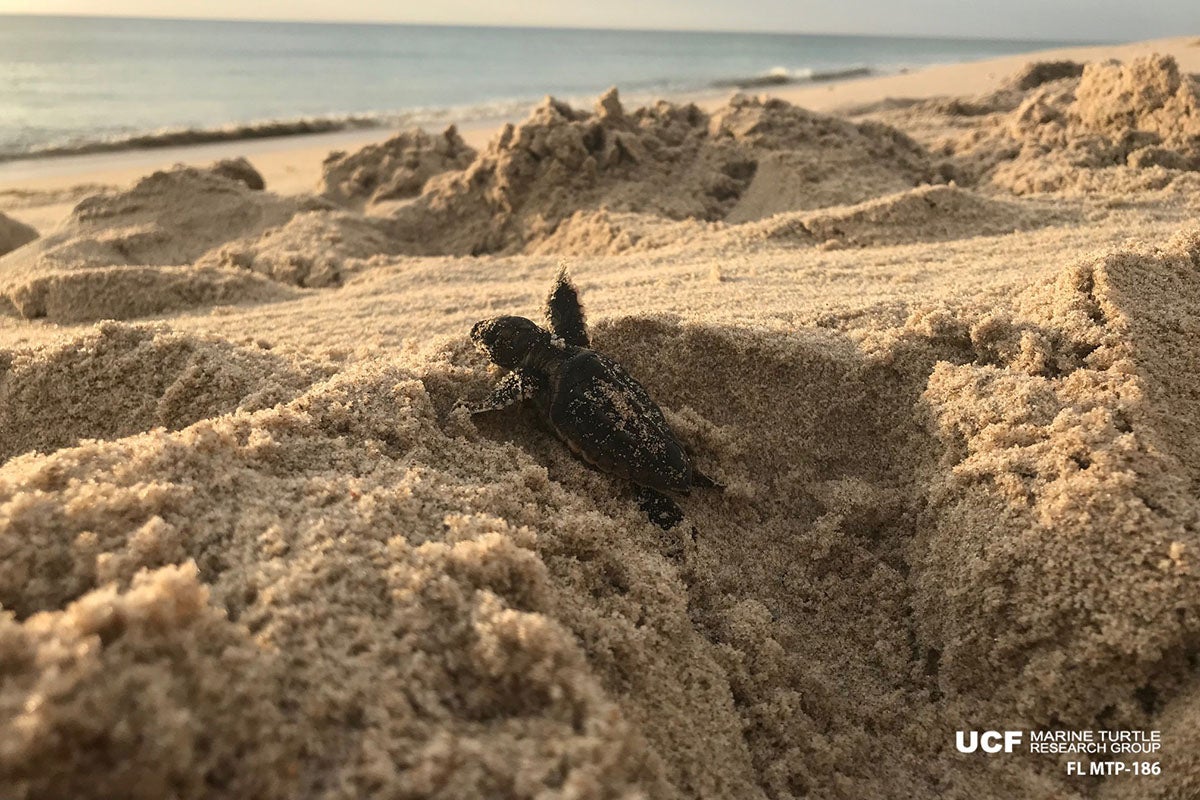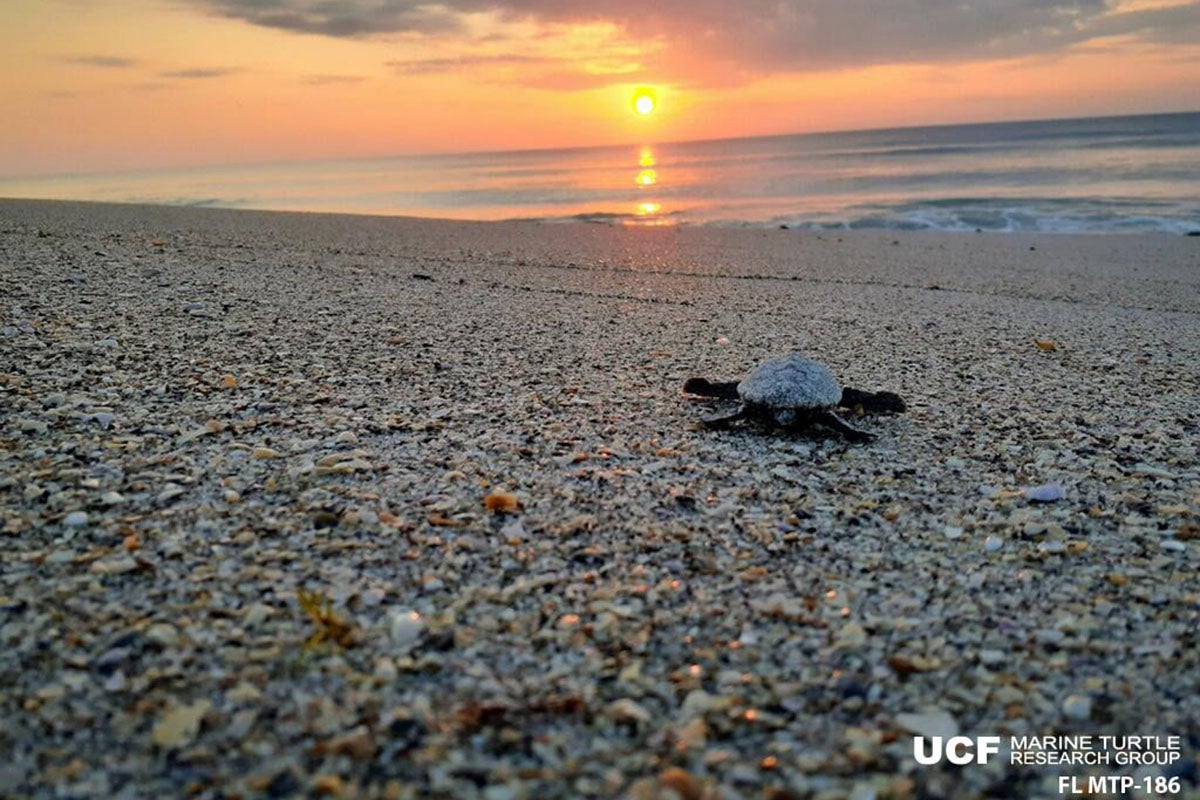Florida’s sea turtle nesting surveying comes to a close on Halloween and like everything else in 2020, the season was a bit weird.
The number of green sea turtle nests on central and southern Brevard County, Florida beaches monitored by University of Central Florida biologists were way up during a year they should have been down based on nearly 40 years of historical data.
“Usually, green turtles alternate between high years and low years, but this year they defied expectations,” says Chris Long, a doctoral candidate and research assistant with UCF’s Marine Turtle Research Group. “Green turtles had the fifth highest year on the Archie Carr Refuge that we’ve recorded since 1982. There is no evidence pointing to high nesting as a result of fewer people on the beaches or anything pandemic-related like that. It’s difficult to know why nesting differed from expectation.”
East-Central Florida’s coastline (from Brevard to Indian River County) is among the most important nesting areas in the world for loggerhead sea turtles, and it also hosts about one-third of all green turtle nests in the state. The region is at the northern end of a “hotspot” for leatherbacks, which nest on the local beaches at a smaller scale as well. All sea turtles in the U.S. are protected under the Endangered Species Act.
UCF has run a sea turtle monitoring and research program on the beaches of the Archie Carr National Wildlife Refuge (ACNWR) in southern Brevard County for more than 35 years. UCF findings about sea turtle abundance and behavior are among the reasons the refuge was created in 1991. The UCF Marine Turtle Research Group focuses on long-term nesting beach and coastal juvenile sea turtle research in Brevard and Indian River counties locally. The group also studies the oceanic “lost years” tracking turtles in the Gulf of Mexico, North and South Atlantic, and Indian Oceans.
All sea turtles saw an increase in nests along the coastline this year compared to recent years. Here’s a look at the numbers recorded by the UCF Marine Turtle Research Group’s covering the 13 northernmost miles of the Archie Carr National Wildlife Refuge. Final counts won’t be tallied until Oct. 31:
Green turtle nests:
- 2020: 8,110 (unexpectedly high for a “low year”)
- 2019: 15,784 (record, “high year”)
- 2018: 1,230 (typical “low year”)
Loggerhead nests:
- 2020: 12,968
- 2019: 10,813
- 2018: 11,901
Leatherback nests:
- 2020: 40
- 2019: 36
- 2018: 17
- Note: there are no clear trends in local leatherback counts; the highest recorded total nests was 55 in 2016.
In 2016 the university and the U.S. Fish and Wildlife Service reached an agreement that established a permanent research facility at the refuge. UCF biologists and students use the facility as a base from which they do most of their coastal work, which includes early morning and overnight beach surveys. Researchers can be spotted marking nests and taking counts on clipboards along the beaches from March 1 to Oct. 31.
The UCF Marine Turtle Research Group counts all sea turtle nests and false crawls (non-nesting emergences) for each species, mark a subset of nests for future assessment, and, during summer months, measure and tag sea turtles they observe. They also keep close track of each species as they arrive on the nesting beach throughout the season. Leatherbacks arrive first, then loggerheads, and then finally the green turtles.





